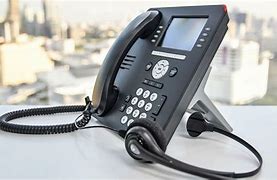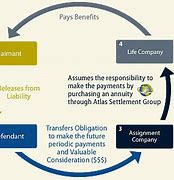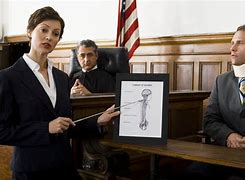
- Virtual Data Rooms 101: The Ultimate Guide to Secure Business Transactions
- What is a Virtual Data Room (VDR)?
- Why are VDRs used in M&A and Due Diligence?
- What are the benefits of using a VDR?
- How do VDRs work?
- VDRs for Mergers and Acquisitions (M&A)
- VDRs for Due Diligence
- Security attributes of VDRs
- Choosing the Right VDR offerr
- Setting Up and Using a VDR
- optimal Practices for Using a VDR
- Conclusion
- Recap of the benefits of using VDRs
- Final thoughts on the importance of secure transactions

In today’s fast-paced business environment, efficiency & security are paramount. When it comes to crucial transactions, such as mergers & acquisitions, due diligence, or fundraising, having a secure & organized system is crucial. This is where Virtual Data Rooms (VDRs) step in, offering a comprehensive solution for streamlining these processes & protecting sensitive information.
A VDR acts as a centralized online platform where you can securely store, manage, & share critical business documents with authorized parties. Imagine a digital vault where all your important files reside, accessible only by those you grant permission to. But a VDR is far more than just a storage space. It empowers you with sophisticated features designed to enhance transparency, collaboration, & compliance during any sensitive business endeavor.
This ultimate guide delves into the intricacies of VDRs, explaining everything from the basics of what they are & why they are essential to their diverse applications & how they benefit your business. Whether you’re a seasoned executive navigating complex mergers or a startup seeking funding, understanding VDRs will provide you with valuable insights into leveraging these powerful tools for greater success.
Virtual Data Rooms 101: The Ultimate Guide to Secure Business Transactions
In the world of business transactions, especially mergers and acquisitions (M&A) and due diligence, security and efficiency are paramount. Enter virtual data rooms (VDRs) – secure online platforms designed to streamline the sharing and management of sensitive information.
What is a Virtual Data Room (VDR)?
A virtual data room is a secure online platform that allows for the controlled sharing and management of confidential documents. Imagine a digital vault, accessible only by authorized individuals, where you can store, share, and track all documents related to a specific transaction. This digital vault is a VDR, providing a secure and organized environment for managing sensitive information.
Why are VDRs used in M&A and Due Diligence?
VDRs play a critical function in facilitating M&A and due diligence processes, providing a central hub for all transaction-related documents. They are essential for:
- Secure information sharing: VDRs ensure that confidential information is only accessible to authorized parties, preventing unauthorized access and leaks.
- Streamlined due diligence: VDRs allow for efficient document sharing and review, making the due diligence process faster and more organized.
- Improved communication: VDRs offer a platform for clear and organized communication between parties involved in a transaction.
- Enhanced transparency: VDRs offer a detailed audit trail, ensuring transparency and accountability throughout the transaction process.
What are the benefits of using a VDR?
The benefits of utilizing a VDR extend beyond security and efficiency. They also offer:
- Reduced costs: VDRs can significantly reduce printing, shipping, and storage costs associated with traditional data rooms.
- Improved collaboration: VDRs facilitate collaboration among multiple parties, including lawyers, accountants, and other stakeholders.
- Enhanced security: VDRs employ advanced security measures like data encryption, access controls, and audit trails, safeguarding sensitive data.
- boostd efficiency: VDRs streamline the entire transaction process, saving time and resources.
How do VDRs work?
VDRs function by providing a secure platform for storing, sharing, and managing documents.
- Document upload: Users can upload documents to the VDR platform, where they are stored securely.
- Access control: VDRs allow for granular access controls, enabling administrators to assign specific permissions to users, such as viewing, downloading, or editing documents.
- Secure communication: VDRs offer secure communication channels for users to discuss transaction details, ask querys, and share feedback.
- Audit trails: VDRs track all user activity, providing an audit trail that demonstrates who accessed what information and when.
VDRs for Mergers and Acquisitions (M&A)
VDRs are an indispensable tool in M&A transactions, facilitating a smooth and secure process for both buyer and seller.
How VDRs facilitate M&A transactions
- Centralized document repository: VDRs act as a central repository for all M&A-related documents, making it easier to manage and track information.
- Secure due diligence: VDRs enable secure and efficient due diligence, allowing potential buyers to access confidential information without compromising security.
- Improved communication: VDRs offer a platform for clear and concise communication between parties involved in the M&A process.
- Time and cost savings: VDRs streamline the M&A process, saving time and resources for both buyer and seller.
How to select the right VDR for your M&A needs
selecting the right VDR is crucial for a achievementful M&A transaction. Consider these factors:
- attributes: select a VDR with attributes tailored to your specific M&A needs, such as document management, access control, and reporting capabilities.
- Security: Prioritize VDRs with robust security measures like data encryption, multi-factor authentication, and audit trails.
- Pricing: Compare pricing models and select a VDR that fits your budget.
- Customer support: select a VDR offerr with excellent customer support to ensure you have assistance when needed.
Using a VDR for due diligence during M&A
VDRs are essential for due diligence during M&A transactions. They offer:
- Secure access to confidential information: VDRs ensure that potential buyers can access sensitive documents without compromising security.
- Streamlined review process: VDRs make the due diligence review process more efficient by providing a centralized platform for all documents.
- Real-time communication: VDRs enable real-time communication between parties, facilitating quick and efficient due diligence.
- Detailed audit trail: VDRs offer a complete audit trail, ensuring transparency and accountability during the due diligence process.
VDRs for Due Diligence
Due diligence is a critical step in any business transaction, and VDRs play a vital function in facilitating this process.
The function of VDRs in due diligence
VDRs offer a secure and efficient platform for conducting due diligence, allowing parties to:
- Access and review pertinent documents: VDRs offer a centralized repository for all documents related to the transaction, making it easy for parties to access and review pertinent information.
- Collaborate with stakeholders: VDRs facilitate collaboration between legal, financial, and technical teams involved in the due diligence process.
- Track progress and milestones: VDRs offer tools for tracking due diligence progress and managing deadlines.
- Ensure data integrity and security: VDRs employ advanced security measures to safeguard sensitive data and ensure its integrity.
Using VDRs for legal and financial due diligence
VDRs are essential for both legal and financial due diligence. They offer:
- Secure access to legal documents: VDRs allow lawyers to access and review legal documents, such as contracts, licenses, and permits.
- Efficient financial data review: VDRs facilitate the review of financial statements, tax returns, and other financial data.
- Streamlined communication: VDRs offer a platform for clear and concise communication between legal and financial teams.
Using VDRs for environmental, social, and governance (ESG) due diligence
ESG due diligence is increasingly crucial for businesses, and VDRs can play a vital function in this process. They offer:
- Access to ESG-related documents: VDRs allow parties to access documents related to environmental, social, and governance practices, such as sustainability reports and compliance records.
- Streamlined ESG data review: VDRs facilitate the review of ESG-related data, making the due diligence process more efficient.
- Enhanced transparency: VDRs offer transparency into ESG practices, allowing parties to make informed decisions.
Security attributes of VDRs
Security is paramount for VDRs, given the sensitive nature of the information they store.
Data encryption and security protocols
VDRs utilize advanced encryption technology to protect data both at rest and in transit. They employ strong encryption algorithms to ensure that only authorized users can access sensitive information.
Access controls and user permissions
VDRs offer granular access controls, allowing administrators to set specific permissions for each user. Users can be granted varied levels of access, such as view-only, download, or edit permissions, depending on their function in the transaction.
Audit trails and activity tracking
VDRs track all user activity, providing a detailed audit trail. This audit trail records every access, download, and modification, ensuring transparency and accountability.
Choosing the Right VDR offerr
Choosing the right VDR offerr is crucial for a secure and efficient transaction process. Consider these factors:
Factors to consider when choosing a VDR offerr
- attributes: select a VDR offerr that offers the attributes you need, such as document management, access control, communication tools, and reporting capabilities.
- Security: Prioritize VDR offerrs with robust security measures, including data encryption, multi-factor authentication, and audit trails.
- Pricing: Compare pricing models and select a VDR offerr that fits your budget.
- Customer support: select a VDR offerr with excellent customer support to ensure you have assistance when needed.
Comparing varied VDR offerrs
study varied VDR offerrs and compare their attributes, security measures, pricing, and customer support. Request demos and speak to current clients to get a better understanding of each offerr’s capabilities.
Pricing and contract terms
Carefully review the pricing models and contract terms offered by varied VDR offerrs. Consider factors such as per-user pricing, storage limits, and contract duration.
Setting Up and Using a VDR
Once you’ve chosen a VDR offerr, you’ll need to set up and configure your VDR workspace.
Creating your VDR workspace
Creating your VDR workspace typically involves setting up user accounts, assigning functions and permissions, and configuring security settings.
Organizing and uploading documents
Organize your documents into logical folders and subfolders to make them easy to find. Upload documents to the VDR platform, ensuring that all pertinent information is included.
Managing user access and permissions
Assign appropriate access permissions to users based on their functions and responsibilities. Grant view-only access to external parties and edit permissions to authorized personnel.
Communicating with stakeholders through the VDR
VDRs offer various communication channels, such as secure messaging, Q&A forums, and meeting rooms. Use these tools to communicate with stakeholders, share updates, and address querys.
optimal Practices for Using a VDR
To maximize the efficacy and security of your VDR, follow these optimal practices:
Ensuring data integrity and accuracy
Double-check that all uploaded documents are accurate and complete. Update documents as needed to ensure that all information is current.
Maintaining secure access practices
Enforce strong passwords and multi-factor authentication to enhance security. Regularly review user permissions and revoke access for individuals who are no longer authorized.
Using the VDR effectively for communication
Utilize the communication attributes of the VDR to facilitate clear and concise communication with stakeholders. Document all discussions and decisions made through the VDR platform.
Monitoring VDR activity
Regularly monitor VDR activity to determine potential security breaches or unauthorized access. Review audit logs and investigate any suspicious activity.
Conclusion
Virtual data rooms have revolutionized business transactions, providing a secure, efficient, and collaborative platform for managing sensitive information. By employing VDRs, businesses can streamline due diligence, improve communication, and enhance transparency, ultimately fostering trust and confidence in all parties involved.
Recap of the benefits of using VDRs
- Enhanced security: VDRs safeguard sensitive information with advanced security measures.
- Improved efficiency: VDRs streamline the transaction process, saving time and resources.
- boostd collaboration: VDRs facilitate collaboration among multiple parties.
- Reduced costs: VDRs can significantly reduce the costs associated with traditional data rooms.
Final thoughts on the importance of secure transactions
In today’s digital age, secure transactions are more critical than ever. VDRs offer the necessary tools to protect sensitive information and ensure the integrity of business transactions. By embracing VDRs, businesses can navigate the complexities of mergers, acquisitions, and due diligence with confidence, knowing that their confidential data is secure.





















